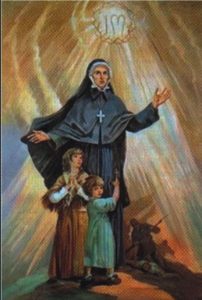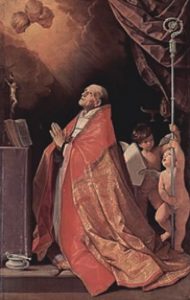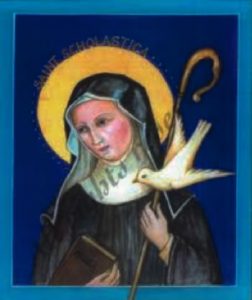February Saints
 Saint Claudine Thévenet (1774-1837)
Saint Claudine Thévenet (1774-1837)
Saint Claudine Thévenet, Glady to her siblings, was born in Lyons in 1774, the second of a family of seven children. Her goodness, gentleness and self-forgetfulness had a strong influence on her brothers and sisters. The French Revolution broke out when she was fifteen. In 1793, she experienced the tragic hours of the siege of Lyons by the government army and witnessed the execution of her two brothers after the city fell. Their last words, “Forgive, Glady, as we forgive” remained in her heart and were to change the course of her life. She dedicated herself to the relief of suffering and in particular to remedy people’s ignorance of God.
A holy priest, Father Andre Coindre, helped her in her quest for God’s will. When he found two little shivering children abandoned on the church steps, he took them to Claudine to be cared for. Her compassion and love for destitute children led to the formation of the Association of the Sacred Heart with her helpers. In 1818, the Congregation of the Religious of Jesus and Mary was founded. The first aim of the young Congregation had been to receive poor children and care for them until they reached twenty years, giving them working skills and elementary education as well as a solid religious and moral formation. The Sisters soon found, however, that not only the poor required this kind of training and opened a boarding school for young girls of richer families.
The last twelve years of her life were beset with difficulties: the deaths of Father Coindre and the first Sisters, the struggle to prevent the fusion of her Congregation with another, the revolutionary upheavals of Lyons in 1831 and 1834. Mother Claudine’s courage was undaunted. She bravely undertook new constructions and, at the same time, with great care and dedication, began to draw up the Constitutions of the Congregation. She was about to complete this when death overtook her on 3rd February 1837.
Claudine made of her religious and apostolic life an act of praise of God’s glory. Her strong personality profoundly influenced her Congregation. Intelligent and a perfect organiser, she was above all kind-hearted, wanting her daughters to be true mothers to the children confided to her care. “Be mothers to these children,” she would say, “yes, true mothers of both body and soul.”
(Source: Internet – various)
 Saint Andrew Corsini (1302-1373)
Saint Andrew Corsini (1302-1373)
Andrew Corsini was born in Florence on 30th November, 1302, a member of the powerful Corsini family. Wild in his youth, Andrew was converted to a holy life by his mother and became a Carmelite monk. He studied in Paris and Avignon, France, returning to his birthplace. There he became known as the Apostle of Florence. He was called a prophet and miracle worker.
Named as the bishop of Fiesole in 1349, Andrew fled the honour but was forced to accept the office, which he held for twelve years. He was sent by Pope Urban V to Bologna to settle disputes between the nobles and commoners, a mission he performed well.
Andrew died in Fiesole on 6th January 1373. So many miracles took place at his death that Pope Eugenius IV permitted the immediate opening of his cause.
(Source: http://www.catholic.org/saints/saint.php?saint_id=1390)
Saint Scholastica, sister of St. Benedict, consecrated her life to God from her earliest youth. After her brother went to Monte Cassino, where he established his famous monastery, she took up her abode in the neighbourhood at Plombariola, where she founded and governed a monastery of nuns, about five miles from that of St. Benedict who, it appears, also directed his sister and her nuns.
She visited her brother once a year, and as she was not allowed to enter his monastery, he went in company with some of his brethren to meet her at a house some distance away. These visits were spent in conferring together on spiritual matters. Once they had passed the time as usual in prayer and pious conversation, Scholastica begged her brother to remain until the next day. St. Benedict refused to spend the night outside his monastery. She had recourse to prayer and a furious thunderstorm prevented Benedict from returning home. They spent the night in spiritual conferences. Three days later Scholastica died and Benedict followed her soon after.
(Source: http://www.catholic.org/saints/saint.php?saint_id=240)

 Entries(RSS)
Entries(RSS)